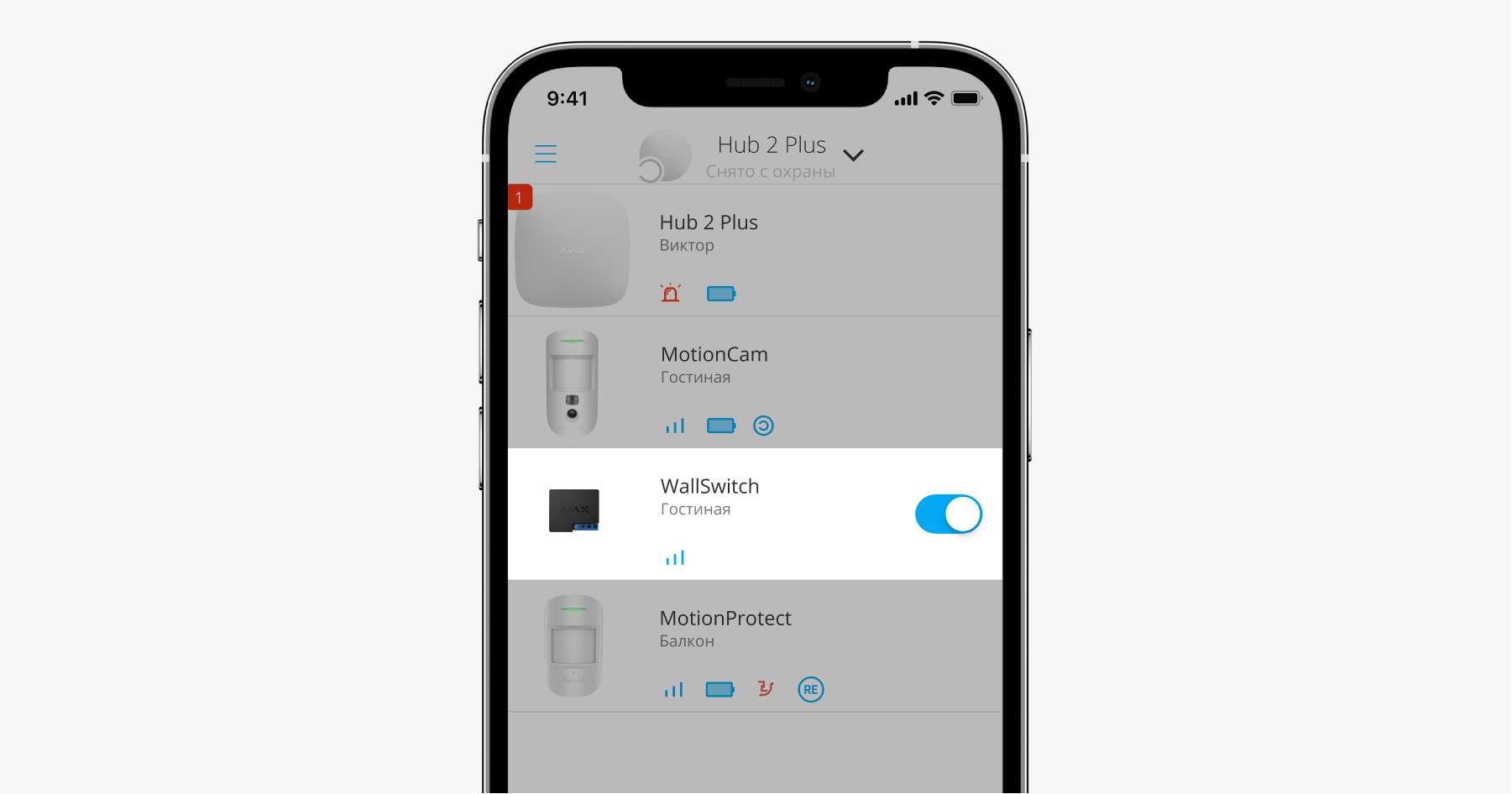Помимо защиты от ограбления, пожара и потопа система Ajax предлагает возможности автоматизации. Мы уже писали, как автоматически управлять перекрытием воды. В этой статье расскажем об автоматизации уличного освещения, а также о нюансах его подключения и управления — с помощью приложений, сценариев и беспроводной кнопки Button.
Зачем автоматизировать уличное освещение
Автоматическое управление освещением позволяет не тратить время на включение и выключение освещения вручную, а также экономить электроэнергию, выключая освещение по расписанию.
Чаще всего автоматизация освещения применяется в частных домах и на дачных участках. Но ее также можно использовать и на стоянках, территориях бизнес-центров и прочих объектах — как для обеспечения безопасности, так и для оптимизации рутинных процессов.
Реализовав автоматизацию средствами Ajax, можно:
- Запрограммировать сценарий на срабатывание датчика движения, чтобы мгновенно осветить территорию при обнаружении постороннего на участке. Таким образом можно не только отпугнуть правонарушителя, но и запечатлеть его приметы интегрированными камерами видеонаблюдения.
Достаточный уровень освещённости при съёмке обеспечит более качественное изображение.
- Настроить расписание освещения и использовать устройства автоматизации для включения света в темное время суток и отключения по утрам.
- Управлять освещением дистанционно через приложение Ajax — из любой точки мира.
- Управлять освещением беспроводной кнопкой Button. Миниатюрные кнопки можно разместить в «стратегических местах» с помощью крепления Holder или носить при себе, например на связке ключей.
- Создать эффект присутствия на объекте — включать-отключать освещение дистанционно в приложении Ajax или по расписанию.
Какое уличное освещение можно автоматизировать с помощью Ajax
Система Ajax позволяет управлять любым уличным освещением.
Уличное освещение состоит из трех основных компонентов — осветительных приборов, электропроводки и оборудования, отвечающего за управление питанием. Модули автоматизации Ajax подключаются к элементам управления питанием уличного освещения, обеспечивая контроль с помощью приложений Ajax, сценариев автоматизации и кнопки Button.
В зависимости от задачи к устройствам автоматизации Ajax можно подключить как один, так и цепь осветительных приборов.
Типы освещения по напряжению питания:
- 110/230 вольт — управляется с помощью WallSwitch. Используется один и тот же источник питания.
- 12/24 вольт — управляется с помощью Relay. Используется один и тот же источник питания.
- 24/36 вольт — управляется с помощью Relay. Используются разные источники питания.
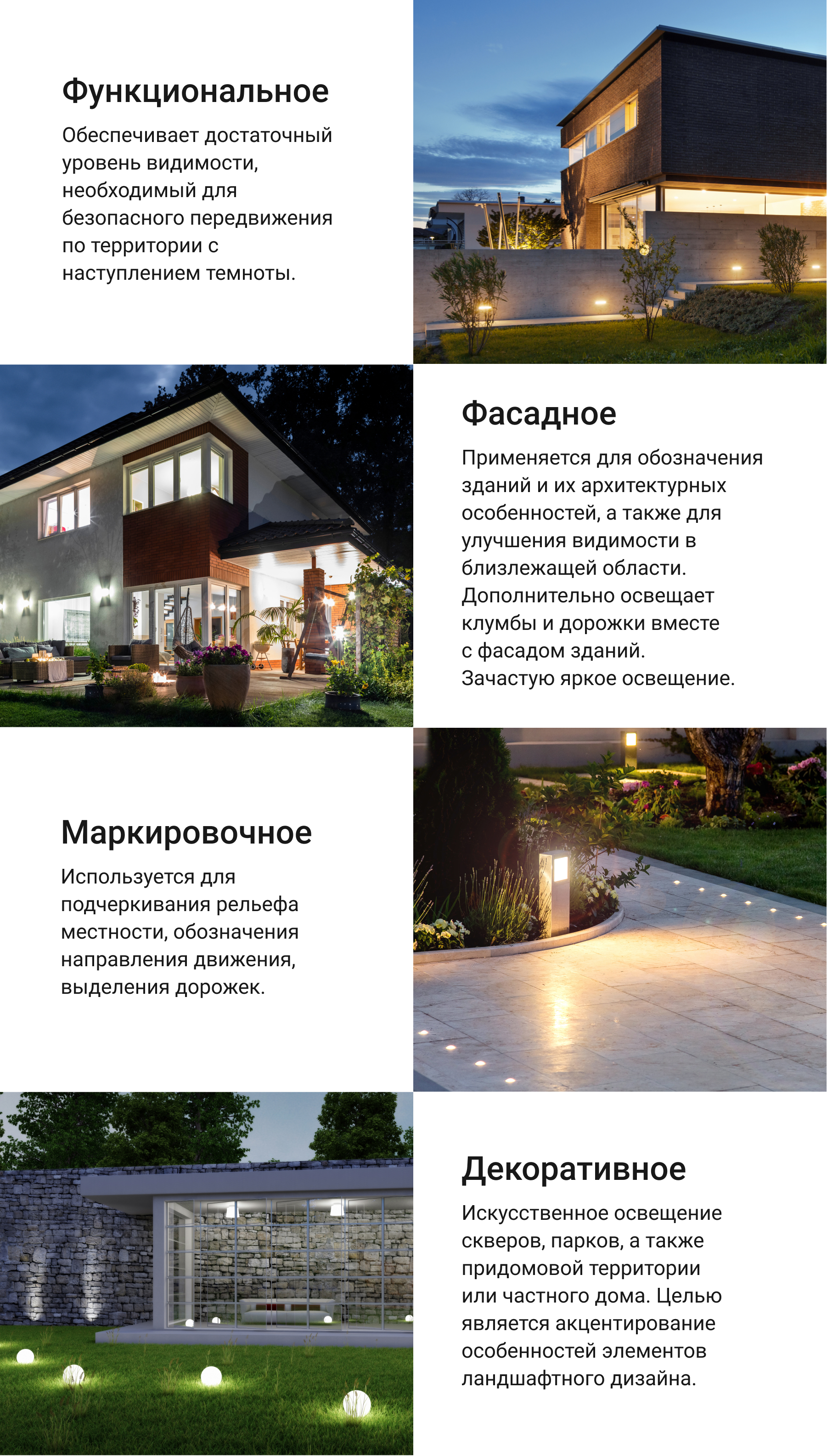
Устройства автоматизации Ajax позволяют управлять как одним осветительным прибором, так и группой приборов одновременно. Ограничение количества осветительной техники в одной цепи определяется общей нагрузкой. Эта информация доступна в руководствах пользователя для Relay и WallSwitch.
Для независимого управления несколькими осветительными приборами вам потребуется соответствующее количество устройств автоматизации. Их необходимо будет подключить к каждому из осветительных приборов отдельно.
Сделайте расчет освещения — определите точное количество и мощность всех светильников, длину и сечение кабеля, а также мощность автоматических выключателей и УЗО. Это поможет определить количество и тип подключаемых устройств автоматизации.
Все элементы освещения, в том числе лампочки, светильники и выключатели, должны быть предназначены для уличного использования, иметь защиту от влаги и пыли. Степень защиты устройств обозначается IP. С классификацией можно ознакомиться на Wikipedia.
Старайтесь использовать медные провода: они не так подвержены механическим повреждениям. Обязательно сделайте заземление всех осветительных приборов.
Размещение светильников должно быть таким, чтобы сервисное обслуживание и монтаж были удобными.
Безопасность
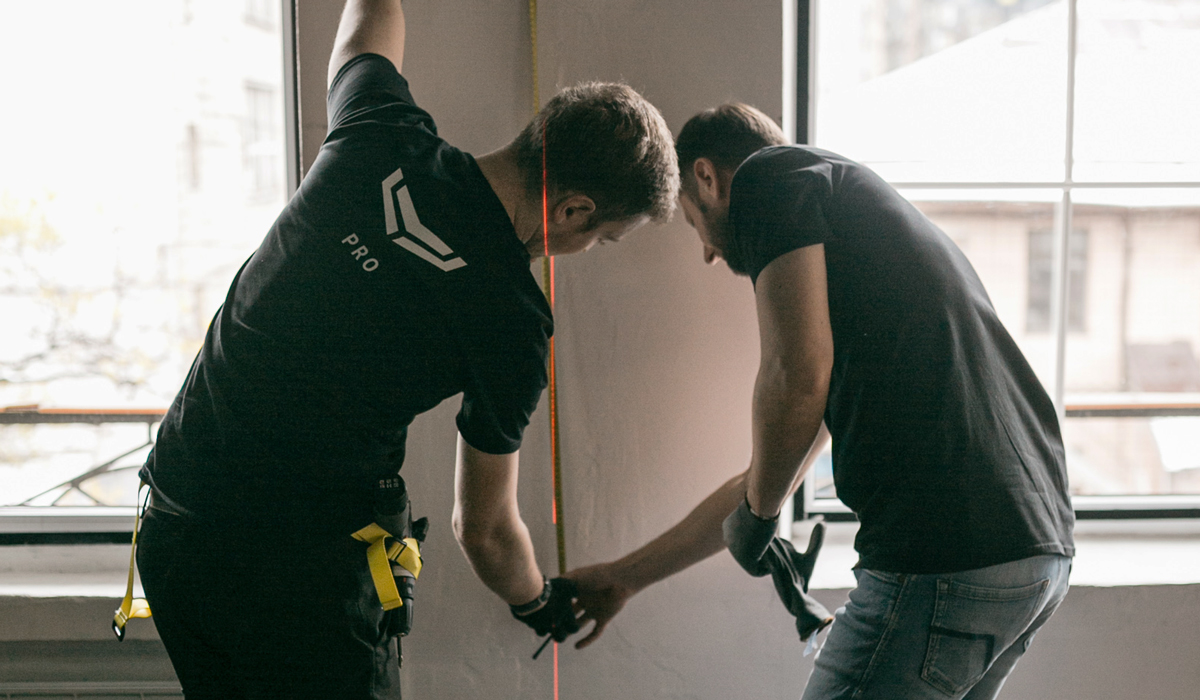
В процессе монтажа и эксплуатации электроприборов придерживайтесь общих правил электробезопасности, а также требований нормативно-правовых актов по электробезопасности.
Не разбирайте устройства под напряжением и не используйте устройства с поврежденным кабелем питания.
Установку и подключение Relay и WallSwitch должен проводить квалифицированный специалист. Не подключайте Relay к источнику питания с напряжением выше 36 В или к цепям переменного тока. Также не подключайте WallSwitch к напряжению, которое выходит за пределы 184–253 В. Это пожароопасно и приведет к поломке устройства.
При установке не допускайте попадания влаги на Relay и WallSwitch или на места соединения кабелей. Учитывайте диапазон рабочих температур и рабочую влажность реле — устройства не должны находиться на открытом воздухе.
Для подключения осветительных приборов используйте распределительные коробки. Это исключает опасность возгорания, так как изолировано место соединения проводов. К тому же доступ к проводам в распределительной коробке будет значительно проще и удобнее.
Используйте правильное соединение электрических проводников осветительных приборов — сварку, пайку, опрессовку или винтовые и болтовые зажимы при подключении приборов освещения. Ни в коем случае не используйте скрутки.
Каждую подключенную цепь осветительных приборов проверяйте мультиметром на отсутствие обрывов и коротких замыканий. Дополнительно можете проверить сопротивление и, как следствие, потребляемую мощность.
Сначала соедините всю цепь, проверьте ее, а только потом подключайте линию к автомату в распределительном щитке.
После завершения подключения обязательно убедитесь в работоспособности всего освещения. Если какие-то светильники не загорелись, отключите всю линию, затем разбирайте и проверяйте состояние контактов и соединений.
Что понадобится для автоматизации уличного освещения и какую роль играет
- Приложение Ajax — для управления, добавления девайсов и настройки.
- Хаб — координирует работу устройств системы. Если необходимо много сценариев, обратите внимание на более продвинутые модели хабов.
- Реле с сухими контактами Relay — управляет включением/выключением освещения.
- Силовое реле WallSwitch — управляет подачей питания.
- DIN Holder — держатель для крепления Relay и WallSwitch на DIN–рейке внутри электрического щитка или распределительной коробки.
- Резервное питание (опционально) — позволяет управлять освещением в случае отказа основной линии питания, при этом хаб работает до 16 часов от резервной батареи. Устройства Ajax работают от батарей от 2 до 7 лет.
Устройства автоматизации Ajax компактны. Их можно разместить в углубленном подрозетнике, корпусе электроприбора или электрическом щитке. Гибкая антенна реле обеспечит стабильность связи на расстоянии до 1000 метров при отсутствии преград.
Качество сигнала на объекте можно приблизительно определить с помощью калькулятора дальности радиосигнала.
Собственный защищенный радиопротокол Jeweller гарантирует бесперебойное взаимодействие всех устройств системы безопасности Ajax с хабом. А благодаря поддержке 5 ретрансляторов радиосигнала одна система Ajax покрывает до 35 км² и готова обеспечить безопасность и автоматизацию отельных комплексов, складов, поместий или заводов.
Как подключить Ajax к уличному освещению
Подключение Ajax к электроцепи 110–230 В
WallSwitch и уличное освещение можно подключить к одному источнику питания. Подключите WallSwitch к цепи питания уличного освещения согласно схеме ниже и настройте систему.
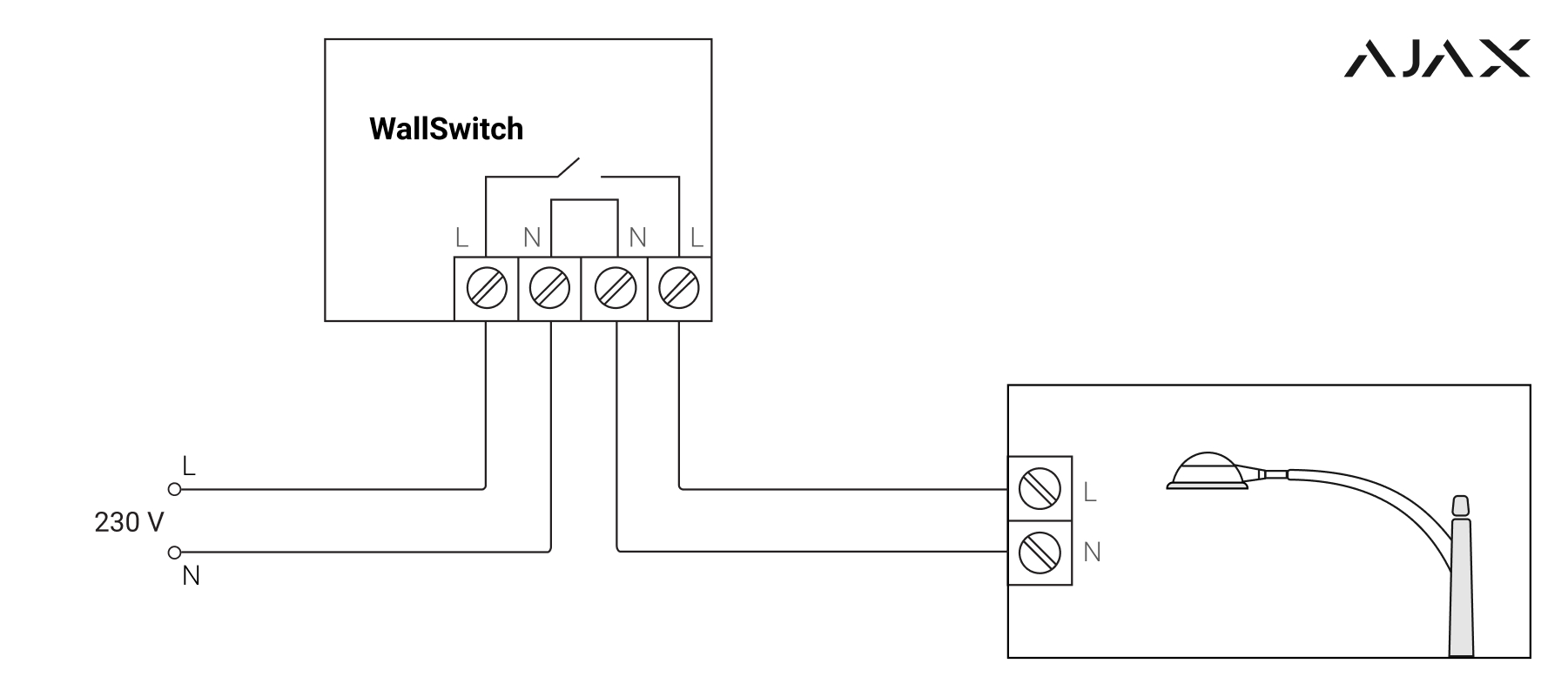
- Подключите источник питания к клеммам питания WallSwitch.
- Клеммы контактов реле подключите к входам питания уличного освещения.
Настройка WallSwitch
- Перейдите во вкладку Устройства
.
- Выберите WallSwitch и перейдите в его Настройки
.
- Установите необходимые параметры:
- Режим работы реле: бистабильный или импульсный.
Импульсный режим позволяет включать освещение на заданное время: от 0,5 до 255 секунд. Это может быть полезно, например, для включения подсветки дороги только на время парковки автомобиля.
- Продолжительность импульса (если выбран импульсный режим): от 0,5 до 255 секунд.
- Состояние контакта: нормально замкнут или нормально разомкнут.
- Режим работы реле: бистабильный или импульсный.
- Нажмите Назад — настройки сохранятся.
Для большей информативности уведомлений переименуйте WallSwitch. Например, назовите устройство «Уличное освещение».
Подключение Ajax к электроцепи 12/24 В
Relay, промежуточное реле и уличное освещение можно запитать от одного источника питания. Подключите Relay к цепи питания уличного освещения согласно схеме ниже и настройте систему.

- Подключите источник питания к клеммам питания Relay.
- К одной из клемм контактов реле подключите «+» источника питания, а к другой клемме контактов реле — «+» осветительного прибора.
- Контакт «–» осветительного прибора подключите к «–» источника питания.
Настройка Relay
- Перейдите во вкладку Устройства
.
- Выберите Relay и перейдите в его Настройки
.
- Установите необходимые параметры:
- Режим работы реле: бистабильный или импульсный.
Импульсный режим позволяет включать освещение на заданное время: от 0,5 до 255 секунд. Это может быть полезно, например, для включения подсветки дороги только на время парковки автомобиля.
- Продолжительность импульса (если выбран импульсный режим): от 0,5 до 255 секунд.
- Состояние контакта: нормально замкнут или нормально разомкнут.
- Режим работы реле: бистабильный или импульсный.
- Нажмите Назад — настройки сохранятся.
Для большей информативности уведомлений переименуйте Relay. Например, назовите устройство «Уличное освещение».
Подключение Ajax к электроцепи 36 В
Relay питается от источника питания 12/24 В. Уличное освещение запитывается от другого источника питания с напряжением 36 В. Подключите Relay к цепи питания уличного освещения согласно схеме ниже и настройте систему.
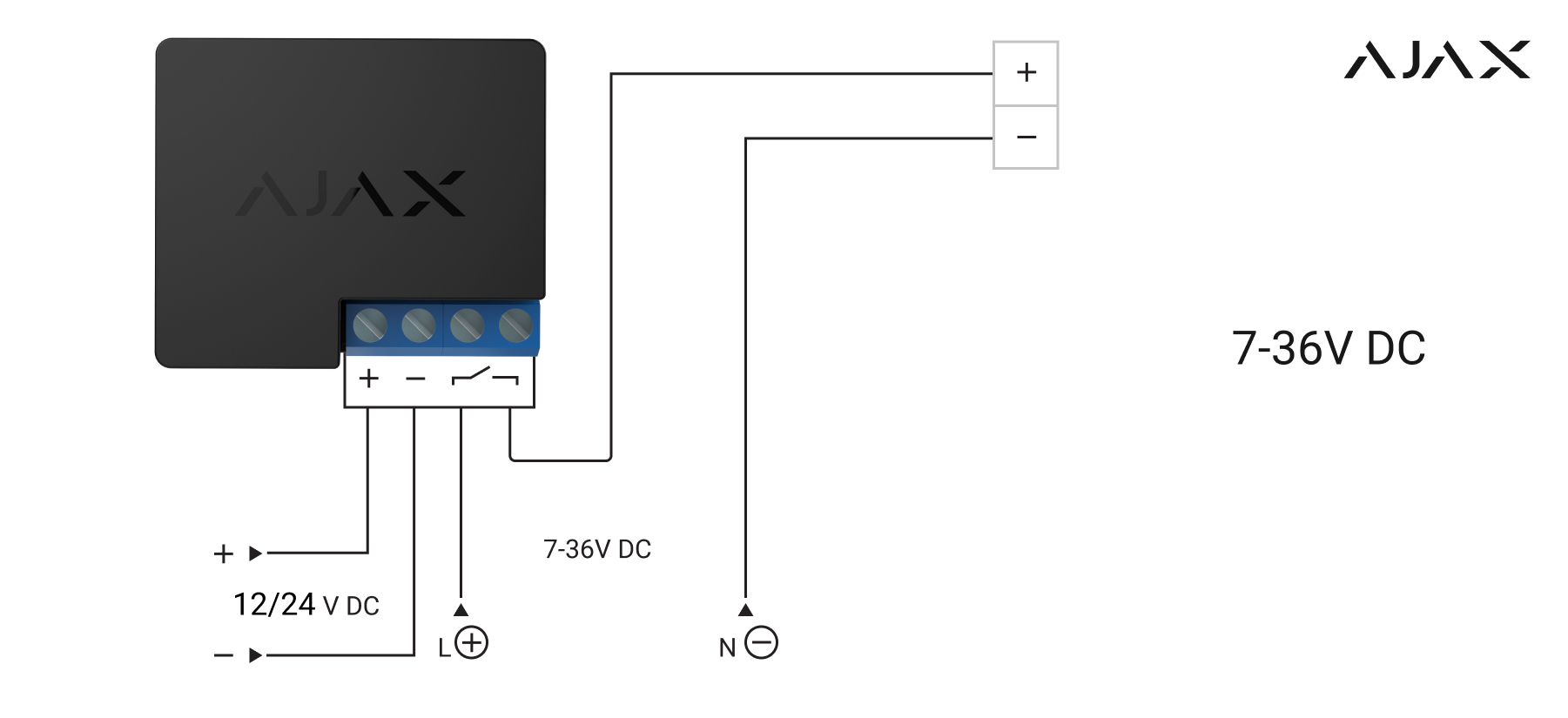
- Подключите источник питания 12/24 В к клеммам питания Relay.
- Подключите «+» источника питания 36 В к одной из клемм контактов Relay.
- Вторую клемму контактов Relay подключите к «+» осветительного прибора.
- Контакт «–» осветительного прибора подключите к «–» источника питания 36 В.
Настройка Relay
- Перейдите во вкладку Устройства
.
- Выберите Relay и перейдите в его Настройки
.
- Установите необходимые параметры:
- Режим работы реле: бистабильный или импульсный.
Импульсный режим позволяет включать освещение на заданное время: от 0,5 до 255 секунд. Это может быть полезно, например, для включения подсветки дороги только на время парковки автомобиля.
- Продолжительность импульса (если выбран импульсный режим): от 0,5 до 255 секунд.
- Состояние контакта: нормально замкнут или нормально разомкнут.
- Режим работы реле: бистабильный или импульсный.
- Нажмите Назад — настройки сохранятся.
Для большей информативности уведомлений переименуйте Relay. Например, назовите устройство «Уличное освещение».
Как настроить сценарии автоматизации уличного освещения
Сценарии Ajax позволяют включать и выключать освещение при смене режима охраны, включении и отключении Ночного режима, по тревоге и расписанию.
Для создания сценариев управления уличным освещением перейдите в меню: Приложение Ajax → Устройства → Relay или WallSwitch → Настройки
→ Сценарии.
Как управлять уличным освещением с помощью кнопки Button
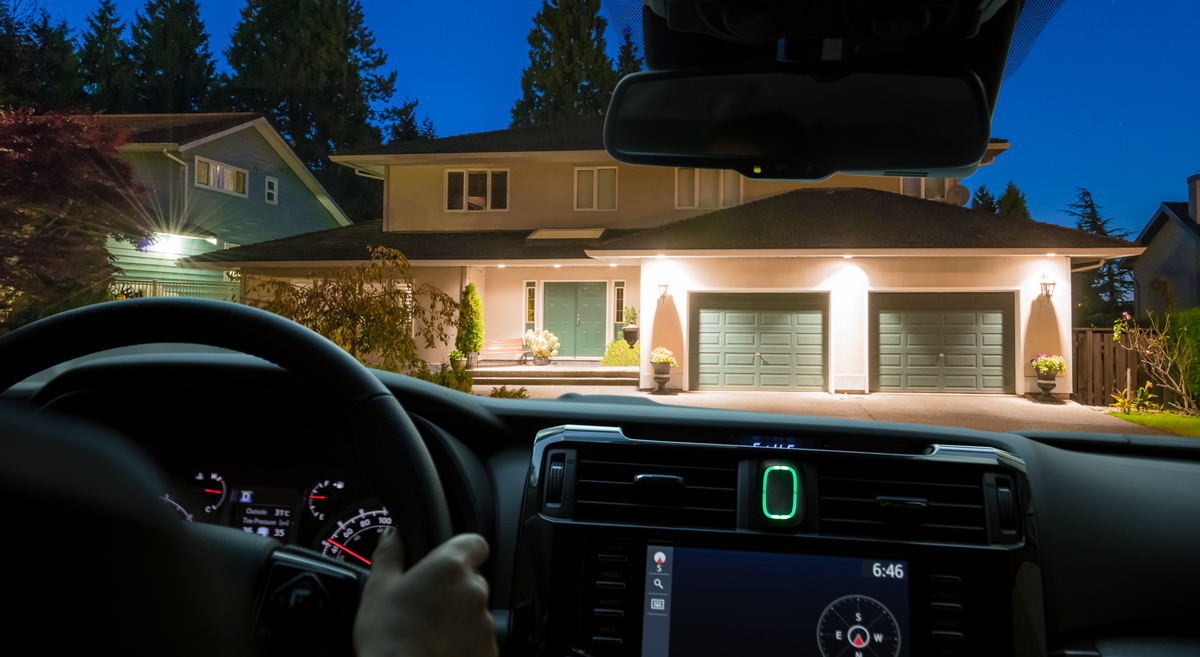
Хаб на OS Malevich 2.10 и новее позволяет настроить разные действия на короткое и длинное нажатие Button. Например, коротким нажатием можно включать освещение, а длинным — выключать.
Для управления уличным освещением с помощью кнопки Button настройте соответствующие сценарии в приложении Ajax:
- Устройства
.
- Button.
- Настройки
.
- Сценарии.
Как управлять уличным освещением с помощью приложения Ajax
Управление устройством WallSwitch в приложении
Нажмите на переключатель в поле силового реле — состояние контактов изменится на противоположное. Когда контакты замкнуты, питание подается и уличное освещение включается. Когда контакты разомкнуты, питание устройства прекращается и уличное освещение выключается.
Управление устройством Relay в приложении
Нажмите на переключатель в поле слаботочного реле — состояние контактов изменится на противоположное. Когда контакты замкнуты, питание подается и уличное освещение включается. Когда контакты разомкнуты, питание устройства прекращается и уличное освещение выключается.

